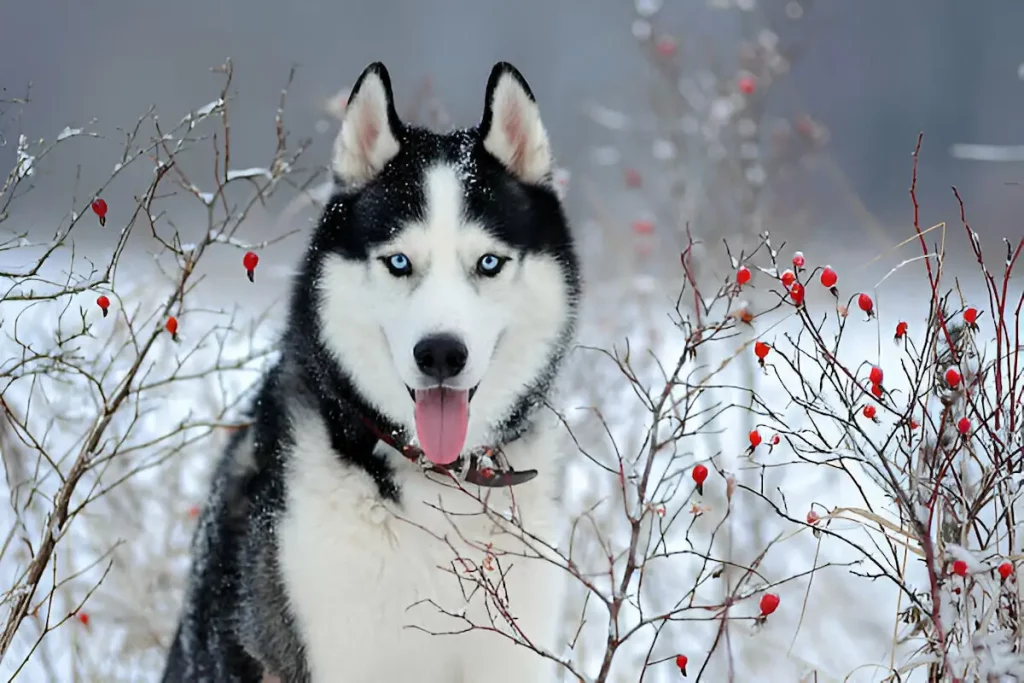The Blue Doberman Pinscher Breed comes from Germany and is named after the dog breed’s founder, Herr Louis Doberman. The breed started near the end of the 19th century. Not a lot is known regarding this breed’s precise start, but it is thought it has somewhat of a long lineage of additional breeds in its ancestry.
The dog breeds believed to be included in the Doberman Pinscher bloodline are Weimaraners, Rottweilers, German Pinschers, Beaucerons, and Manchester terriers. Dobermans are incredibly loyal to their family. They’re ferociously protective and have served as guard dogs for both homes and companies. Dobermans are extremely smart and can be easily trained to be a very obedient breed. They have to be trained beginning with puppies and need loads of socialization.
Dobermans are available in several select shades without very much variation. They’re usually black, red, white, fawn, white, and blue. Like nearly all additional breeds, the Dobermans can have a gene that alters this breed’s particular genetic inscriptions.
The Blue Doberman Pinscher

One kind of gene they may carry is called the color-diluted gene, and it’s a recessive gene that dilutes the coloring of a black Doberman and makes it appear to be blue. It also can affect a red puppy and cause it to look fawn-colored. Did you ever see one of these? Well, keep on reading, and you will learn about seven things you did not know regarding Blue Dobermans.
The majority of people know about Dobermans. They are good-looking black and tan dogs well-known for being super guard dogs. However, not a lot of people know about the blue variety. It is a color variation of the Doberman breed. They aren’t blue, so don’t look like a Smurf, lol. This use of the word blue just means the standard black color is diluted. They really look grey and catch the eye of many people who want a Doberman with an unusual color.
Dobermans usually are available in a few different colors: The AKC (American Kennel Club) allows four shades, which are blue and rust, black and rust, fawn and rust, and red and rust. The rust-colored part is typically seen over their eyes and on their muzzle, fore chest, legs, feet and throat, and under their tail. You may have seen a white one, but the AKC doesn’t accept that color as a standard.
A blue Doberman’s coat color is due to a gene that hinders total pigmentation and dilutes it. Consequently, instead of looking black with some rust markings, these dogs look blue with some rust markings. The Doberman Pinscher Club of America says this dilution is due to a recessive gene. All Dobermans have two color genes (black B or red b) and two dilution factor genes (dd). A blue coat color can happen when “black” Dobermans (BB or Bb) have both dilution genes (dd).
The blue and fawn coat color (which is also a diluted color, in this case, a dilution of red) were deemed previously to be adverse gene mutations, but these days they are totally accepted as a good coat color. Today, many blue and fawn Dobermans have been registered successfully. They are now competing in the show ring, even if they may not be as commonplace as the other coat colors because of the problems in maintaining their coats.
Blue Doberman Puppies

Watch out for Doberman breeders that charge above-average prices for a blue Doberman puppy or list them as unusual or rare. Though dilute dogs only consist of eight to nine percent of this dog breed, blue Dobermans aren’t really rare. If you are interested in buying blue Doberman puppies, choose a breeder who is part of a local club that participates in conformation or performance shows with their dogs.
DOG TRAINING AGGRESSIVE DOBERMAN PINSCHER
Training an aggressive Doberman Pinscher requires dedication and an understanding of the underlying causes of aggression. With the right approach, including positive reinforcement training, professional help, and patience, aggressive behavior can be effectively managed, ensuring a happy and well-behaved dog.
FAQS: about Blue Doberman Pinscher
Where are Blue Dobermans from?
Blue Dobermans aren’t blue, actually. Their color is really a sort of greyish shade that sort of looks blue. Yet, this shade is from a diluted recessive gene that has to be present in both parents to make this “blue.” So, whenever this recessive dilute gene exists, a “black” Doberman pair can produce blue pups, and a “red” Doberman pair can produce fawn-colored puppies, which is a dilute red shade. They’re rarer than regular black and rust or red and rust. However, not as rare as some folks believe.
Other Doberman Colors: The 6 Main Doberman Pinscher Colors
Is breeding Blue or Gray Dobermans discouraged?
Since this color is due to genetics and is not thought of as a regular Doberman dog breed shade, breeders typically tell new owners they shouldn’t breed either a fawn or blue Doberman Pinscher. The pup could appear normal and may be healthy. However, good breeders wish to maintain a good ancestry for their dogs and don’t want to encourage the gene to get passed down.
Is the Blue Doberman considered an AKC breed standard?
Yes, a Blue Doberman is still considered an AKC breed standard, but it is not recognized by most of its European counterparts.
The Doberman color not recognized by the American Kennel Club is the white-colored doberman.
Is a Blue Doberman good as a guard dog?

It doesn’t matter the color a Doberman Pinscher is. all of them inherit the instinct to protect their people and property. They’re quite alert and extremely sensitive to any dangerous situation, which means they are top guard dogs. Simply because a Doberman is not a conventional black dog with rust markings, it does not mean they won’t have the same characteristics as any other Doberman.
Is it easy to train a Blue Doberman Pinscher?
Dobermans are very smart and so are easily trained. They are amongst the top obedient pups if you work them correctly and consistently. Severe punishments while training will not work with them. They react much better when praise is used during training. A Doberman loves to make his owner happy. Whenever they’re praised for doing something useful as well as for trying, they’re going to intuitively wish to do your bidding because they crave more rewards and praise.
Are there additional health concerns with Blue Dobermans?
All breeds are susceptible to certain kinds of medical problems, like humans, and usually are vulnerable to some for their own dog breed. Blue Dobermans are vulnerable to the same health problems shared by all Dobermans, which comprise von Willebrands disease as well as Cardiomyopathy.
Since they all have a color-diluted gene, Blue Dobermans also have the additional problem of a skin condition called Color Dilution Alopecia, which causes their fur to be brittle and makes it break more easily. Eventually, if they get this disorder, they may lose a lot of hair in prominent regions of the body. Having unprotected skin may cause troubles such as scaly skin as well as bacterial skin diseases. There’s not a cure, although it has to be followed as well as treated as problems occur.
What’s the energy intensity of a Gray or Silver Doberman?
Dobermans are well-known for having loads of energy and need a lot of exercise, so they stay physically and psychologically sharp and motivated. So, if your Blue Doberman acquires Blue Doberman Syndrome or Color Dilution Alopecia, you may begin to see it has less energy. That may be caused by a problem that makes them itch, and they don’t feel as energetic if there is a large outbreak of scaly skin or an infection. It is essential to stay ahead of any skin ailment via regular veterinarian visits and follow the recommended treatment plan to keep Dobermans contented, healthy, and energetic.
Does a Blue Doberman puppy cost more than other Dobermans?
Yes, a Blue Doberman puppy may be rarer and only consist of around eight to nine percent of all Dobermans, but that isn’t extremely rare, so breeders ought not to say anything different and decide to make people pay higher costs for Blue Dobermans.
If a Doberman breeder says this to you and wants to charge very high prices (far more so than a normal Doberman puppy), walk away and find a trustworthy breeder.
What is Blue Doberman Syndrome?
Blue Doberman syndrome, also called blue balding syndrome, or Color Mutant Alopecia, is a disorder affecting blue Dobermans, yet other dog breeds where diluted coats occur can also get it. What exactly is this syndrome? Blue Doberman syndrome is hereditary and seems to happen in breeds where diluted coats appear.
The word alopecia is the medical label for losing hair. This disorder is triggered by an underlying defect that causes an atypical allocation of melatonin in a dog’s hair shafts. These dogs consequently have hair loss in the diluted colored regions. The tan areas are not affected.
Affected doberman puppies aren’t born having this disorder and hence might not have symptoms immediately, but symptoms might occur later once the pups leave the breeder’s house and are getting settled in their brand-new homes. Usually, this disorder is seen between 6 months and three years old.
The afflicted dog’s coat might begin to dry out and get scaly, and there could be numerous papules and pustules. The existence of broken hair might be seen too. Shortly, there will be bald regions that could be ugly. According to veterinary dermatologists, the disorder doesn’t normally cause itching, but sometimes, resourceful secondary pyoderma can occur and trigger pruritus if extensive.
Fawn and Blue Doberman pinschers are incredibly susceptible to getting color dilution alopecia. This disorder’s occurrence may be as much as 93 percent for blues as well as 75 percent for fawns.
How do you treat Blue Doberman Syndrome?
If your blue Doberman begins to develop skin troubles and hair loss, task them to a veterinarian. There are chances that your dog has blue Doberman syndrome, although there are a lot of other illnesses that may cause comparable hair loss for dogs.
Your veterinarian might wish to rule out the dog having a low thyroid level (a frequent cause of hair loss for dogs) and additional hormone-related troubles with blood tests. They might then do a skin biopsy to exclude other skin disorders. Definitive diagnosis is made via a microscopic assessment of their hair which might be sent away to be evaluated by a Dermatopathologist, a specialist who studies cutaneous disorders at the microscopic level. Complicated cases should see a veterinary dermatologist.
Regrettably, there’s no definitive treatment for this syndrome, and the hair loss is frequently permanent. If there are any secondary skin diseases, they are commonly treated with antibiotics. Treatment choices include supplementing with products that are aimed at improving the skin. The Animal Dermatology Clinic says that essential fatty acids, as well as Vitamin A supplements, might help occasionally. Talk to your vet for suitable treatment choices.
Luckily, besides hair loss, dogs experiencing blue Doberman syndrome can still have a happy and healthy life. Doberman blue syndrome consequently persists mostly as a cosmetic problem instead of a health issue.


